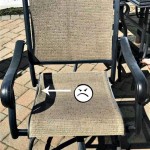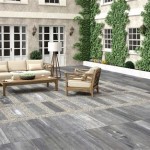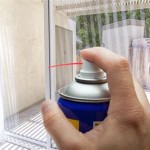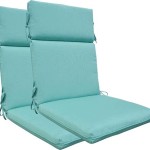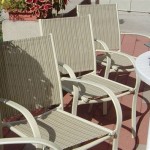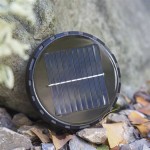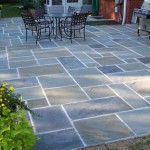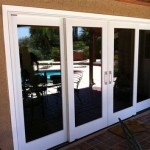Epoxy Paint For Concrete Patio: A Comprehensive Guide
Epoxy paint is a popular coating solution for concrete patios, offering a blend of durability, aesthetics, and protection. Understanding the properties, application process, and maintenance requirements of epoxy paint is crucial for achieving a long-lasting and visually appealing result. This article provides a detailed examination of epoxy paint for concrete patios, covering various aspects from material selection to potential challenges.
Concrete patios are subjected to a range of environmental stressors, including temperature fluctuations, moisture exposure, and abrasion from foot traffic and furniture. Without adequate protection, concrete can crack, stain, and deteriorate over time. Epoxy paint acts as a protective barrier, shielding the concrete from these damaging elements and extending its lifespan. Furthermore, epoxy coatings can significantly enhance the aesthetic appeal of a patio, transforming a dull, gray surface into a vibrant and inviting outdoor space.
Key Benefits of Using Epoxy Paint on Concrete Patios
Epoxy paint offers several advantages that make it a desirable choice for concrete patio applications. These benefits stem from the inherent properties of epoxy resins, which create a tough, resilient, and chemically resistant coating.
Enhanced Durability and Protection: One of the primary benefits of epoxy paint is its exceptional durability. Epoxy coatings form a hard, abrasion-resistant surface that can withstand heavy foot traffic, furniture movement, and exposure to harsh weather conditions. This protective layer prevents the concrete from absorbing stains from spills, oil, and other contaminants. The resistance to chemicals like salts and acids is particularly beneficial in regions with harsh winters where de-icing agents are commonly used.
Improved Aesthetics and Design Flexibility: Epoxy paint is available in a wide array of colors, finishes, and textures, allowing homeowners to customize the look of their patios. It is also possible to add decorative flakes, metallic pigments, or other additives to create unique and visually appealing designs. The smooth, glossy finish of many epoxy coatings can brighten up an outdoor space and create a more inviting atmosphere. Epoxy coatings can also be used to conceal minor imperfections in the concrete surface, resulting in a more uniform and polished appearance.
Ease of Maintenance and Cleaning: Epoxy-coated concrete patios are relatively easy to clean and maintain. The seamless, non-porous surface prevents dirt and grime from penetrating the concrete, making it easy to wipe away spills and debris. Regular sweeping and occasional cleaning with a mild detergent and water are typically sufficient to keep the patio looking its best. This low-maintenance characteristic is a significant advantage for homeowners seeking a durable and attractive patio surface that requires minimal upkeep.
Types of Epoxy Paint Suitable for Concrete Patios
Various types of epoxy coatings are available, each with its own set of characteristics and performance attributes. Selecting the appropriate type of epoxy is crucial for achieving optimal results and ensuring the long-term durability of the patio surface. The common types of epoxy coatings for concrete patios are as follows:
Water-Based Epoxy: Water-based epoxies are known for their low odor and ease of application. They are a popular choice for DIY projects and interior applications. However, they may not be as durable or chemical-resistant as solvent-based epoxies, making them less suitable for high-traffic outdoor patios or areas exposed to harsh chemicals. Water-based epoxies typically have lower volatile organic compound (VOC) content, making them a more environmentally friendly option.
Solvent-Based Epoxy: Solvent-based epoxies offer superior durability, chemical resistance, and adhesion compared to water-based epoxies. They are well-suited for high-traffic outdoor patios and areas exposed to chemicals and extreme temperatures. However, solvent-based epoxies have a strong odor and higher VOC content, requiring proper ventilation during application. They are generally considered more challenging to apply than water-based epoxies and may require professional installation.
100% Solids Epoxy: 100% solids epoxies contain no solvents or water, making them virtually odorless and VOC-free. They offer exceptional durability, chemical resistance, and adhesion, making them an ideal choice for demanding applications. However, 100% solids epoxies are typically more expensive and require specialized equipment and expertise for proper application. They are often used in commercial and industrial settings where maximum performance and environmental compliance are critical.
Epoxy Mortar Systems: Epoxy mortar systems are a blend of epoxy resins and aggregates, such as sand or quartz. They are used to repair damaged concrete surfaces or create a textured, slip-resistant finish. Epoxy mortar systems offer exceptional durability and resistance to impact and abrasion. They are often used in high-traffic areas or areas subject to heavy wear and tear. Application requires specialized tools and expertise.
Preparing the Concrete Patio for Epoxy Paint Application
Proper surface preparation is essential for ensuring the successful application and long-term performance of epoxy paint. The concrete surface must be clean, dry, and properly prepared to promote optimal adhesion and prevent premature failure of the coating.
Cleaning the Concrete Surface: The first step in preparing the concrete patio is to thoroughly clean the surface to remove dirt, grease, oil, and other contaminants. This can be achieved by sweeping, scrubbing, or power washing the concrete. Stubborn stains may require the use of a degreaser or concrete cleaner. The surface should be allowed to dry completely before proceeding to the next step.
Repairing Cracks and Imperfections: Any cracks, chips, or imperfections in the concrete surface should be repaired before applying epoxy paint. Small cracks can be filled with a concrete crack filler or epoxy patching compound. Larger cracks or damaged areas may require more extensive repairs, such as concrete resurfacing or patching with an epoxy mortar system. The repaired areas should be allowed to cure completely before proceeding to the next step.
Etching the Concrete Surface: Etching the concrete surface is crucial for creating a porous profile that will allow the epoxy paint to bond properly. This can be achieved by using a muriatic acid solution or a concrete etching product. Follow the manufacturer's instructions carefully and wear appropriate safety gear, including gloves, eye protection, and a respirator. After etching, the concrete surface should be thoroughly rinsed with water and allowed to dry completely.
Applying a Primer (Optional): Applying an epoxy primer can further enhance the adhesion and durability of the epoxy coating. A primer helps to seal the concrete surface, prevent moisture migration, and create a uniform base for the epoxy paint. Choose a primer that is compatible with the epoxy coating being used. Follow the manufacturer's instructions carefully when applying the primer.
Applying Epoxy Paint to a Concrete Patio: A Step-by-Step Guide
Applying epoxy paint to a concrete patio requires careful attention to detail and adherence to the manufacturer's instructions. The following steps provide a general guideline for applying epoxy paint, but it is important to consult the product specifications for specific recommendations.
Mixing the Epoxy: Epoxy paint typically consists of two components: a resin and a hardener. These components must be thoroughly mixed together according to the manufacturer's instructions. Use a mixing drill with a mixing paddle to ensure proper blending. Mix only the amount of epoxy that can be applied within the recommended pot life. Allow the mixture to sit for the recommended induction period to allow the chemical reaction to begin.
Applying the First Coat: Apply the first coat of epoxy paint using a roller, brush, or squeegee. Start by cutting in around the edges of the patio with a brush. Then, roll or squeegee the epoxy onto the remaining surface, ensuring even coverage. Avoid applying the epoxy too thickly, as this can lead to sagging or bubbling. Allow the first coat to dry for the recommended drying time before applying the second coat.
Applying the Second Coat (Optional): A second coat of epoxy paint may be required to achieve the desired thickness, color, and durability. Apply the second coat in the same manner as the first coat, ensuring even coverage. Additional coats may be applied for increased protection or aesthetic enhancement. Allowing proper drying time based upon the product's specifications is crucial.
Adding Decorative Flakes or Additives (Optional): Decorative flakes, metallic pigments, or other additives can be added to the epoxy paint to create unique and visually appealing designs. Broadcast the flakes or pigments onto the wet epoxy coating immediately after application. Allow the epoxy to dry completely before applying a clear topcoat to seal the flakes or pigments. This will also add additional protection.
Applying a Clear Topcoat (Optional): A clear topcoat can be applied over the epoxy paint to provide additional protection, enhance the gloss, and improve the abrasion resistance. Choose a topcoat that is compatible with the epoxy coating being used. Apply the topcoat according to the manufacturer's instructions. This will protect the epoxy from UV damage in most circumstances.
Potential Challenges and Troubleshooting
While epoxy paint offers numerous benefits for concrete patios, some potential challenges may arise during the application process or over the long term. Understanding these challenges and knowing how to troubleshoot them can help ensure a successful and durable outcome.
Bubbling and Blistering: Bubbling and blistering can occur if the concrete surface is not properly prepared or if the epoxy is applied too thickly. To prevent bubbling and blistering, ensure that the concrete surface is clean, dry, and properly etched. Apply the epoxy in thin, even coats and avoid working in direct sunlight or high temperatures. If bubbles or blisters do appear, they can be repaired by sanding the affected area and applying a fresh coat of epoxy.
Peeling and Chipping: Peeling and chipping can occur if the epoxy coating does not adhere properly to the concrete surface. This can be caused by inadequate surface preparation, moisture contamination, or the use of incompatible products. To prevent peeling and chipping, ensure that the concrete surface is properly cleaned, etched, and primed. Allow the concrete to dry completely before applying the epoxy and use only compatible products. If peeling or chipping does occur, the affected area must be sanded and re-applied with epoxy paint.
Color Fading and Chalking: Color fading and chalking can occur over time due to exposure to sunlight and UV radiation. To minimize color fading and chalking, choose an epoxy paint that is formulated with UV inhibitors. Apply a clear topcoat that is also UV-resistant. Regularly clean and maintain the patio surface to remove dirt and debris that can contribute to color fading.
Slip Resistance: Epoxy coatings can be slippery when wet, especially if they have a smooth, glossy finish. To improve slip resistance, add a non-slip additive to the epoxy paint or apply a textured topcoat. Consider the potential for slips and falls when choosing the type of epoxy and finish for the patio.
By carefully selecting the appropriate type of epoxy paint, properly preparing the concrete surface, and following the manufacturer's instructions, homeowners can achieve a durable, attractive, and long-lasting epoxy coating for their concrete patios.

Concrete Patio Epoxy Solid Custom Floor Coatings

Patio Concrete Floor Coatings Better Than Epoxy Flooring

Outdoor Patio With Full Flake Epoxy Coating And Polyaspartic Top Coat Youtube

The Best Epoxy Flake Patio Floor

Pros And Cons Of Using Epoxy For Outdoor Concrete

Deck Coat High Performance Outdoor Diy Epoxy Coating Kit Gray Blend Covers Up To 250sf 25x Thicker Than Paint Stain Perfect For Wood Decks Or

Achieve A Professional Look With An Epoxy Patio Floor Orlando

Concrete Patio Coatings Tsr

The Best Patio Floor Coatings In Mt Dora

What Is The Best Type Of Concrete Coating For Patios

